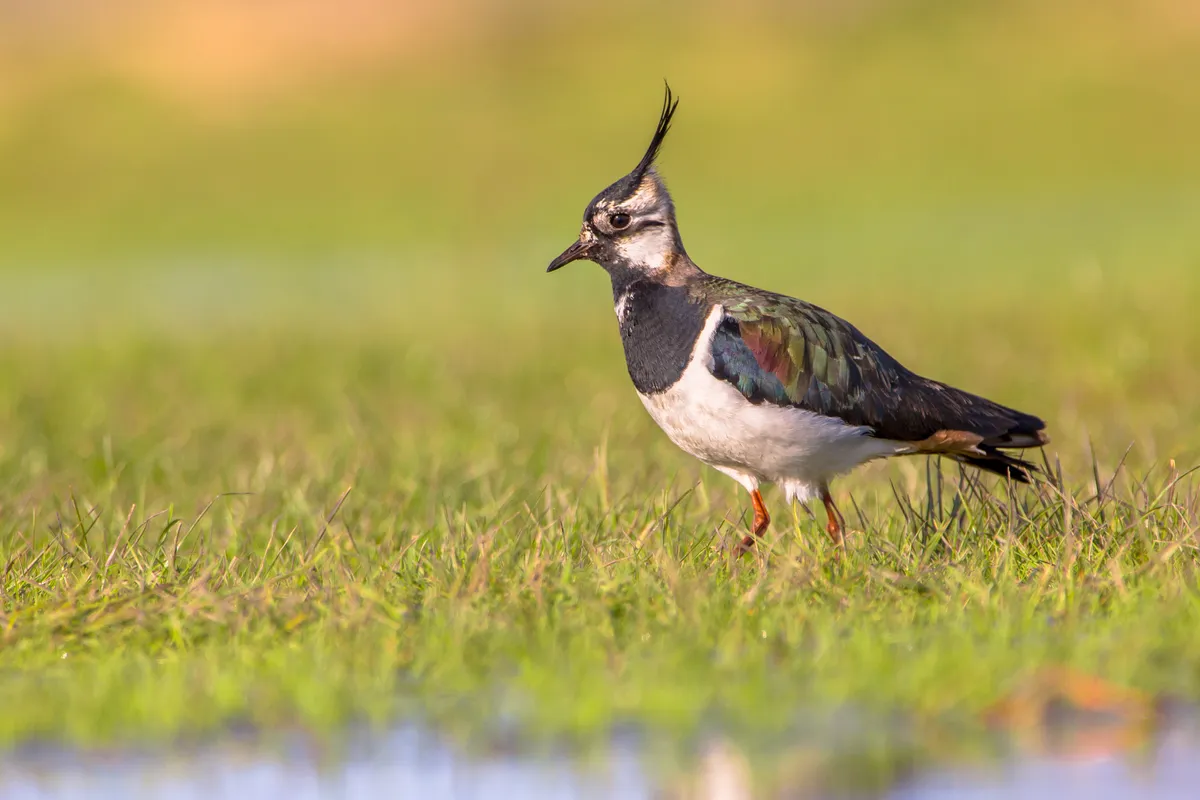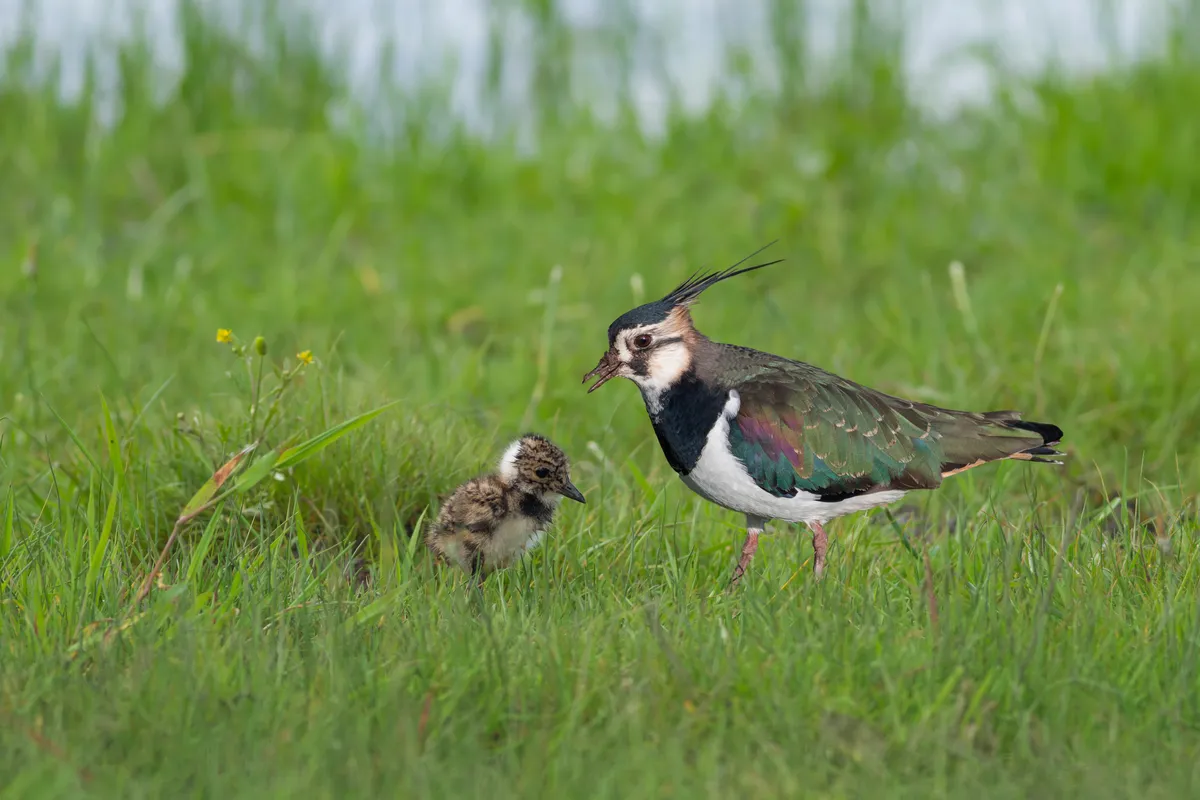1
Other names for the lapwing
The lapwing's alternative name, peewit, mimics its distinctive, two-syllable call. It is known by similarly onomatopoeic names in other European languages: Kiebitz (German), vipe (Norwegian), priba (Slovenian), vivak (Croatian).
2
Legal protection for lapwings
Lapwings were once the sole subjects of a parliamentary act. The 1928 Protection of Lapwings Act restricts the taking of the birds and their eggs for food, a practice that had severely reduced populations.

3
How many
Lapwings rear just a single brood of up to four chicks a year, but they may lay up to four replacement clutches if their eggs are lost.
4
How many lapwing chicks survive?
Less than 40 per cent of lapwing chicks survive to fledging. They are particularly vulnerable to predators soon after hatching, when their parents lead them from the nest to suitable feeding habitat.

5
Are lapwings getting rarer?
Lapwing numbers fell by 49 per cent in England and Wales between 1987 and 1998 - the result of changing agricultural practices – though the species has fared better in Scotland.